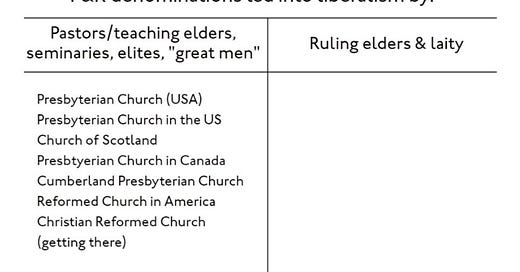The Rise & Fall of the Presbycrats
Why the trajectory of the PCA was what it was and why it is shifting.
Despite voices warning the PCA was slipping down a progressive slope, for the most part confessional churches (now referred to by the chic as “Neo-Fundamentalists”) and progressive congregations (are they the “Neo-Liberals” according to the new chic nomenclature?) got along well enough until recently.
While they had concerns regarding some currents in the PCA, many small-and-medium-sized confessional churches were content to leave the work of General Assembly largely to others. As a result, the PCA lurched slowly, yet steadily in a broad, progressive direction until about 2019.1
The 2019 and 2021 Assemblies represented a clear rejection of the broad, progressive, wing of the General Assembly. And elders at the Assembly took heed to the warnings about the slippery progressive slope.
I. Changing the PCA Trajectory
The recent unveiling of a series of emails from the once-secretive National Partnership (NP) reveals the alarm of the Progressives regarding the new trajectory of the General …


